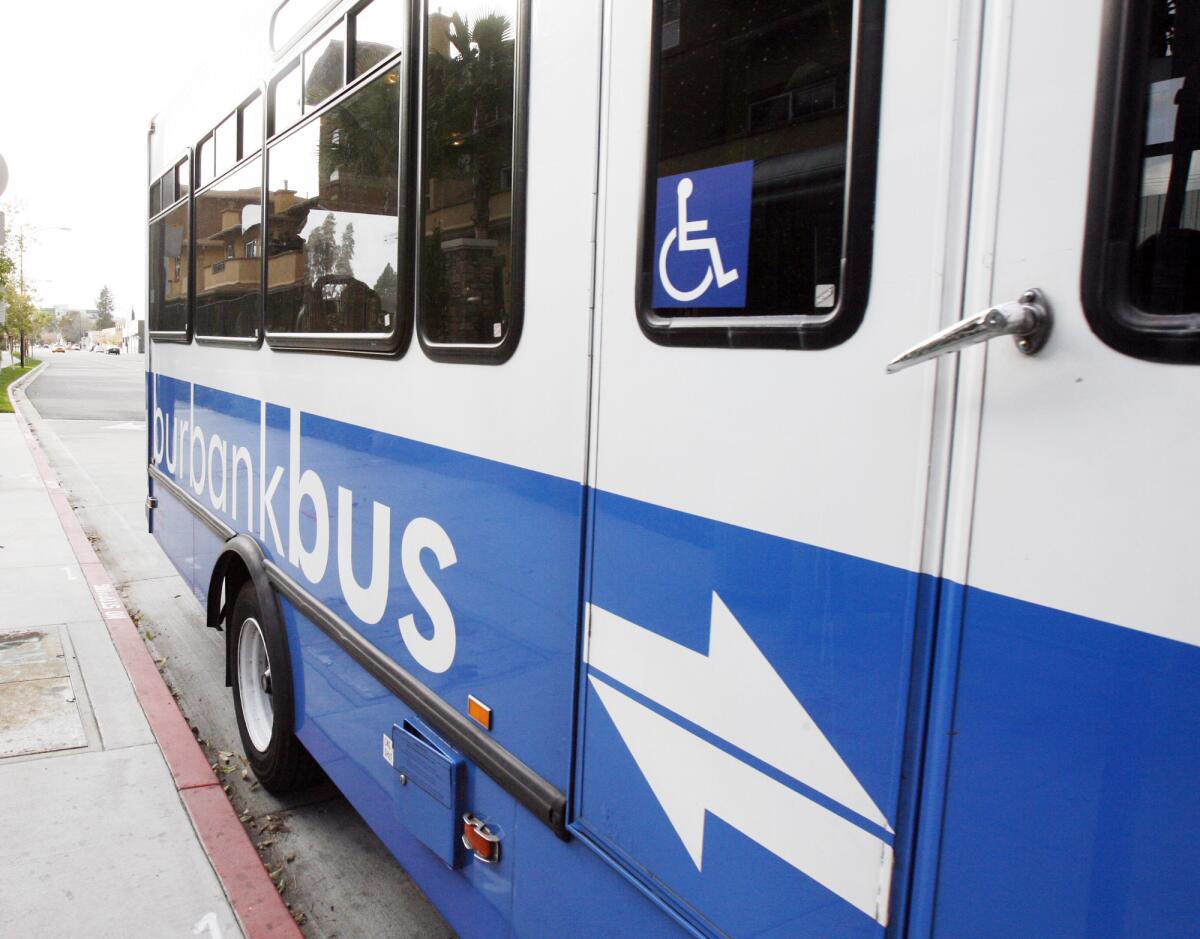BurbankBus ‘NoHo to BoHo’ route gains riders

A BurbankBus arrives on Empire Avenue at Buena Vista Avenue in this 2012 file photo.
Ridership on the BurbankBus route between the North Hollywood Metro Station and Bob Hope Airport has increased steadily since June, when the service began running throughout the day rather than only at peak hours.
In June, passenger numbers were up 13%, or about 700 riders, compared to June 2014, when the route was operating only during heavy travel periods in the mornings and evenings, with roughly 16 minutes between buses.
In a similar comparison, ridership was up 16%, or about 1,000 riders, in July and 26% in August, a difference of nearly 1,800 riders over August 2014.
That’s according to a report given by David Kriske, Burbank’s deputy city planner, to the Burbank-Glendale-Pasadena Airport Authority on Monday. Kriske said making the route an all-day service has improved on-time performance and seems to have encouraged riders to rely on the service more often.
About half of the riders surveyed last month said they were using the bus route more frequently than in the past, and about half said they use it five times or more a week.
Prior to this summer, there had been no off-peak, “single-seat” connection between San Fernando Valley’s only commercial airport and the station for the Red Line subway and Orange Line bus route, Kriske said. That meant routes either operated on peak hour schedules or required passengers to transfer along the way.
The “NoHo to BoHo” service, as the airport’s executive director has called it in the past, now operates from 5:30 a.m. to 10:30 p.m., with buses running every 15 minutes during morning and evening commute times, every 20 minutes during midday hours — 9:35 a.m. to 2:15 p.m. — and every 45 minutes after 7 p.m.
He said the all-day service, which is being paid for by the Los Angeles County Metropolitan Transportation Authority with Measure R funds, offered a “good opportunity to bridge this connection.” It’s part of the city’s efforts to lessen the traffic impacts caused by construction projects on the Golden State (5) Freeway,
It will cost roughly $350,000 a year, Kriske said, and is expected to be paid for until the construction projects are completed in 2019. Along with all-day service, an agreement between the city and the airport has allowed BurbankBus to pick up and drop off passengers inside the airport’s new transportation center.
Last year, the airport authority spent almost $45,000 to provide a free shuttle service between the North Hollywood station and the airport, said Mark Hardyment, the airfield’s director of government and environmental affairs.
The authority will continue to offer the it on weekends and holidays when the BurbankBus does not run, but Hardyment said Metro has been able to “accentuate and advertise” the BurbankBus route in ways the airport could not promote its shuttle, such as with in-station ads and better signage.
Additionally, Metro gave the BurbankBus a better bay assignment at the NoHo station so customers can see it when they ascend the stairs from the Metro stop.
“It’s much easier to find and much more convenient for passengers taking the Red Line,” Hardyment said.
Kriske credited Metro board members Ara Najarian and Michael Antonovich for backing the expanded service, which could demonstrate the rider demand for a potential extension of the Metro Orange Line in five to 10 years.
It may also help support the case for an express bus service between North Hollywood and the Pasadena Gold Line, which would have stops in Burbank and Glendale, providing the “missing link” for transit in the region, Kriske said. The Metro board is expected to consider the route later this month.
The city has renamed its route the NoHo-Airport route and colored it orange on maps, brochures and signage to help promote the all-day service, Kriske said, and he hopes to see ridership continue to increase in order to support the case for seeking permanent funding for all-day service from Metro.
“Our trajectory is good, and we hope to see that continue,” Kriske said.